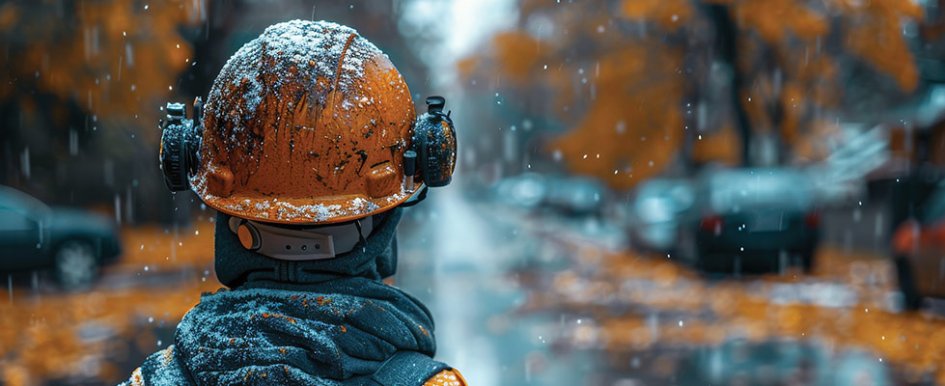
The best time to think about cold stress safety isn’t when it’s about to snow — it’s when it’s still warm out. Cold stress happens when skin temperature and internal body temperature drops. If the body can’t warm itself, the stress can lead to serious illnesses and injuries.
Construction superintendents may start to think about protecting workers against the cold when frigid temperatures and winter are right around the corner. Oftentimes though, that may be too late, especially if the jobsite is in the Northeast, Midwest, Rocky Mountains or parts of the upper Pacific regions of the U.S. When a person’s body temperature becomes too low, it can affect their brain function and ability to move. Illnesses and conditions brought on by cold stress can also cause permanent damage. Like planning for temporary heat or building temporary enclosures, possible solutions for cold-related risks require very specific planning, equipment and materials, so it’s never too soon to begin a cold-stress protection strategy to prevent serious injuries and illnesses on the jobsite.
A common misconception is that cold stress can only happen when someone is outside, but workers face risks indoors and outdoors. If a building isn’t insulated adequately, it won’t provide warmth or protection from cold elements, and in the construction industry, workers may be at jobsites working inside partially constructed buildings — exposing themselves to the cold. This is a unique risk present in the construction industry that field supervisors need to address.
A worker’s physical fitness and condition is also an important cold-stress risk factor. Poor levels of conditioning can result in faster core temperature cooling, and preexisting conditions such as a prior diagnosis of frostbite, Raynaud’s phenomenon, peripheral vascular disease and diabetes can further accelerate the risk of injury.
What Are the Symptoms of Cold Stress?
Cold stress symptoms vary depending on the injury or illness. While there are some common symptoms across different cold-stress-related injuries and illnesses, each one can also affect the body differently. Some of the common injuries that cold stress can cause include hypothermia, frostbite, trench foot and chilblains.
When it comes to hypothermia, which can affect brain function and make a person unable to think clearly or move well, there are varying levels of severity according to “Cold Stress — Cold-Related Illnesses” from the U.S. Centers for Disease Control and Prevention (CDC). Mild hypothermia occurs when a person’s body temperature is between 90 degrees and 98 degrees, and symptoms include shivering, lack of coordination, stumbling, slurred speech and pale skin. There is also moderate hypothermia, when body temperature is between 86 degrees and 90 degrees. At this stage, shivering stops but there is reduced breathing and a slower heart rate. A person may be unable to stand or walk and appear confused or irrational.
Hypothermia can become severe when body temperature is between 78 degrees and 86 degrees, and a person experiences muscle stiffness and an irregular pulse. This is the most concerning level, as a person can also be very sleepy and have extremely cold skin.
When a person has frostbite, they lose feeling and color in the impacted area. It commonly affects a person’s nose, ears, cheeks, chin, fingers and toes, damaging deeper tissues of the body.
Meanwhile, trench foot is caused by prolonged exposure to wet and cold. According to the CDC, symptoms include skin reddening, numbness, leg cramps, swelling, blisters or ulcers, bleeding under the skin and gangrene.
Chilblains, which are the inflammation of the small blood vessels in the skin due to cold exposure, can cause permanent skin damage and redness. If someone is repeatedly exposed to cold temperatures, the itchiness can return.
How Do You Get Rid of Cold Stress?
To reduce injury and illness risk, workers need protection from cold exposure. Construction superintendents can take measures to protect workers by training field supervisors and workers to prevent, recognize and treat cold-related illness and injury, as well as properly monitoring jobsites in cold conditions to make sure workers are taking adequate breaks in a warm environment.
It is imperative that construction superintendents provide prompt medical attention if workers show signs of cold-related illness or injury. Creating a management and employee safety committee would be helpful and providing risk management solutions before a situation arises. This includes mitigation efforts such as encouraging breaks to warm up when needed and ensuring access to warm areas to change out of wet clothes, as well as reducing workers’ time spent in cold environments and rotating workers to provide relief from the physical demands of a construction job.

